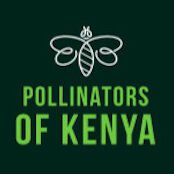Fluttering Pollinators: The Role of Butterflies in Plant Reproduction
Butterflies are part of the Lepidoptera family, which includes moths. These insects have a unique relationship with plants, and they depend on each other for survival. Butterflies are attracted to flowers by their bright colors, fragrances, and nectar. As they feed on the nectar, they also collect pollen on their bodies. When they move from one flower to another, they transfer the pollen, fertilizing the plant.
Pollination is essential for plant reproduction, and without it, many plants would not be able to produce fruit or seeds. Butterflies play a vital role in pollination, especially for plants that are not pollinated by bees or other insects. For example, butterflies are the primary pollinators for many wildflowers, and they are also important for the reproduction of crops such as tomatoes, peppers, and strawberries.
Butterflies have a unique way of pollinating plants compared to other pollinators. Unlike bees, which have specialized structures to collect and transport pollen, butterflies have hairy legs and bodies that can hold pollen. They also have a long proboscis, a straw-like mouthpart that can reach deep into flowers to collect nectar.
Butterflies are highly sensitive to environmental changes, and their populations are affected by habitat loss, climate change, and pesticide use. Loss of habitat, for instance, reduces the availability of nectar plants and host plants for butterfly larvae. Climate change alters the timing of flowering, which affects the availability of nectar for butterflies. Pesticides also harm butterfly populations, both by killing adult butterflies and by reducing the availability of nectar and host plants.
Therefore, it is essential to conserve butterfly habitats, such as meadows, forests, and wetlands, to ensure their survival and their vital role in pollination. Planting butterfly-friendly plants in gardens and farms can also provide nectar for butterflies and support their populations. Additionally, avoiding the use of pesticides and using sustainable farming practices can help protect butterfly populations and promote pollination




